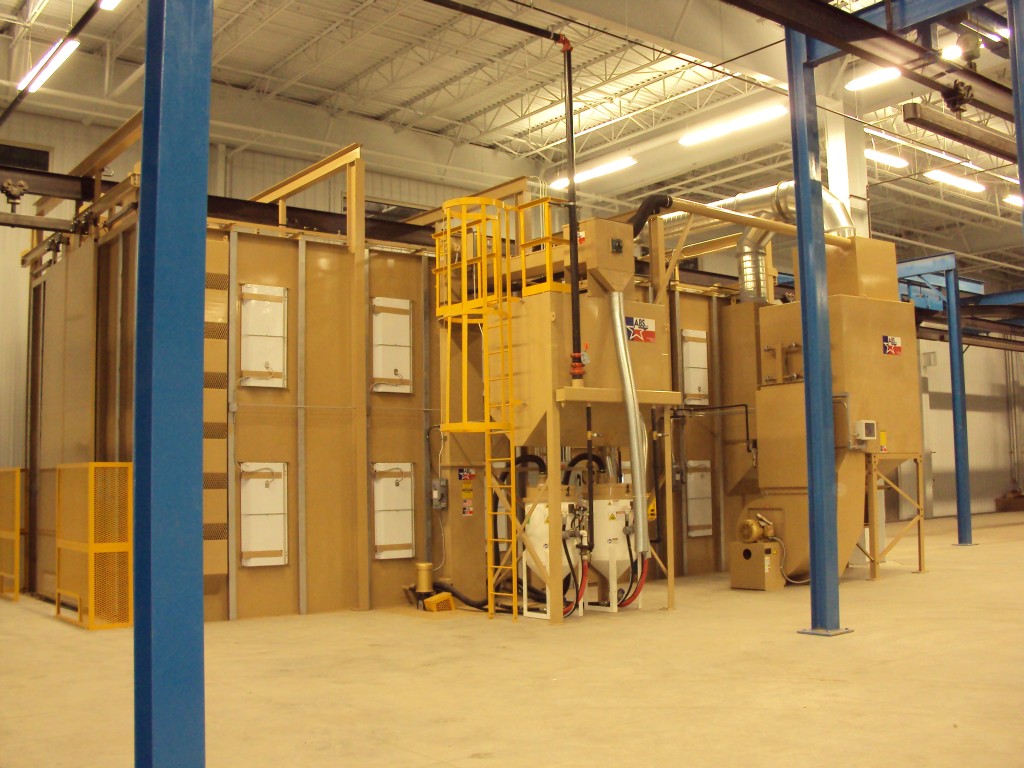Abrasive blast rooms are indispensable tools for preparing surfaces before finishing. These chambers provide a safe, efficient, and cost-effective method for cleaning and prepping metal components. By utilizing an abrasive blast room, businesses can significantly reduce waste, recover valuable abrasive materials, and minimize environmental impact—all while achieving superior results. Abrasive blasting removes contaminants like mill scale, old coatings, and rust, ensuring a clean and uniform surface for subsequent treatments. This process not only enhances durability but also improves the appearance of the final product. An abrasive blast room, often referred to as a blast booth, is a specially designed space where abrasive blasting operations take place. These rooms typically feature a robust containment structure to prevent abrasive particles from escaping into the surrounding environment. Additionally, they incorporate advanced recovery systems that capture and recycle unused abrasive materials, making them both environmentally friendly and economically advantageous. Once the blasting operation concludes, the leftover abrasive falls to the floor or collection trays within the blast room. A sophisticated recovery system then retrieves this material, separating out fine dust and debris, leaving behind high-quality abrasive suitable for reuse. This continuous cycle of recovery and recycling helps slash operational costs while maintaining optimal performance. To function effectively, a blast room requires several essential components: [Insert Video Here] Abrasive blasting can be executed manually using specialized hoses and nozzles tailored to specific job requirements. Alternatively, automated mechanical systems equipped with tracks offer greater precision and efficiency, particularly for repetitive tasks. During the blasting procedure, unfinished parts undergo thorough cleaning to eliminate unwanted residues such as paint, mold, and rust. The resulting surface becomes smooth, consistent, and ready for further processing. Throughout this process, abrasive particles and tiny dust fragments settle onto the floor beneath the work zone. Post-blasting, the accumulated abrasive material is collected via the recovery mechanism. Options include sweeping mechanisms, conveyor belts, jet streams, or movable floors—all designed to channel debris toward the recycling unit. Inside the recycling system, dust and impurities are filtered out, leaving behind pristine abrasive that can be recycled back into the blasting equipment. Modern blast rooms are highly customizable, accommodating diverse product specifications. Whether you need manual blasting hoses, automated track systems, or cutting-edge recovery setups, there’s a solution to meet every requirement. No single design fits all scenarios; flexibility is key. If you're considering building an abrasive blast room, look no further than Finishing Systems. We pride ourselves on offering competitive pricing along with a personalized touch that caters specifically to your unique challenges and goals. Energy-saving EPS Foaming Machine,High-efficiency EPS Foaming Machine,EPS Foaming Machine,EPS Foam Energy Saving Machine Hangzhou Sutuan Machinery Co.,Ltd.Demystifying Abrasive Blast Rooms
Last Updated: December 22, 2023
What Exactly Is an Abrasive Blast Room?
Key Components of an Abrasive Blast Room
The Mechanics Behind Abrasive Blasting
Partner with Finishing Systems for Your Custom Blast Room Needs
Leading EPS EPP ETPU machinery manufacturer , https://www.sutuanmachinery.com
**Exploring Abrasive Blast Rooms: The Ultimate Solution for Surface Preparation**
